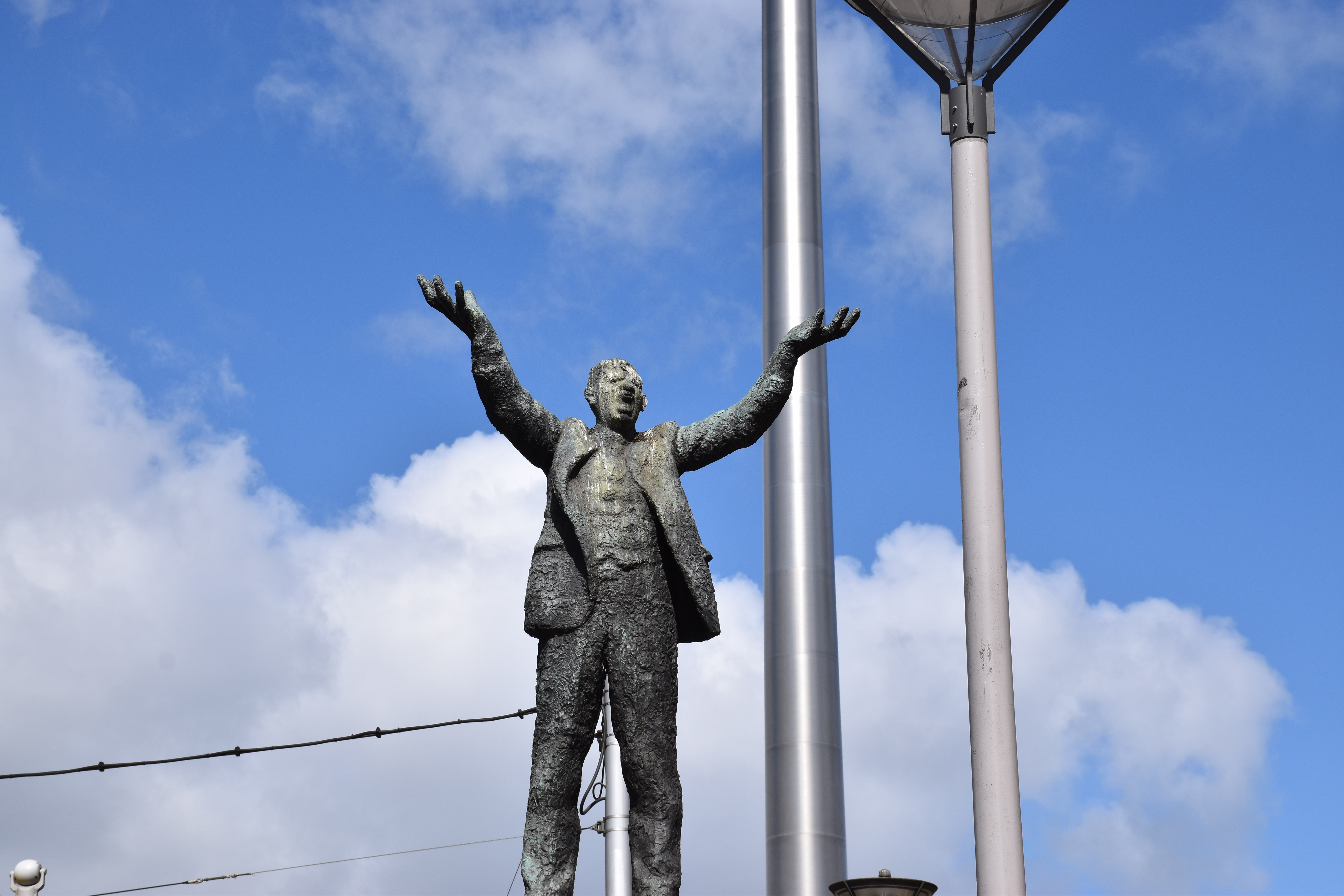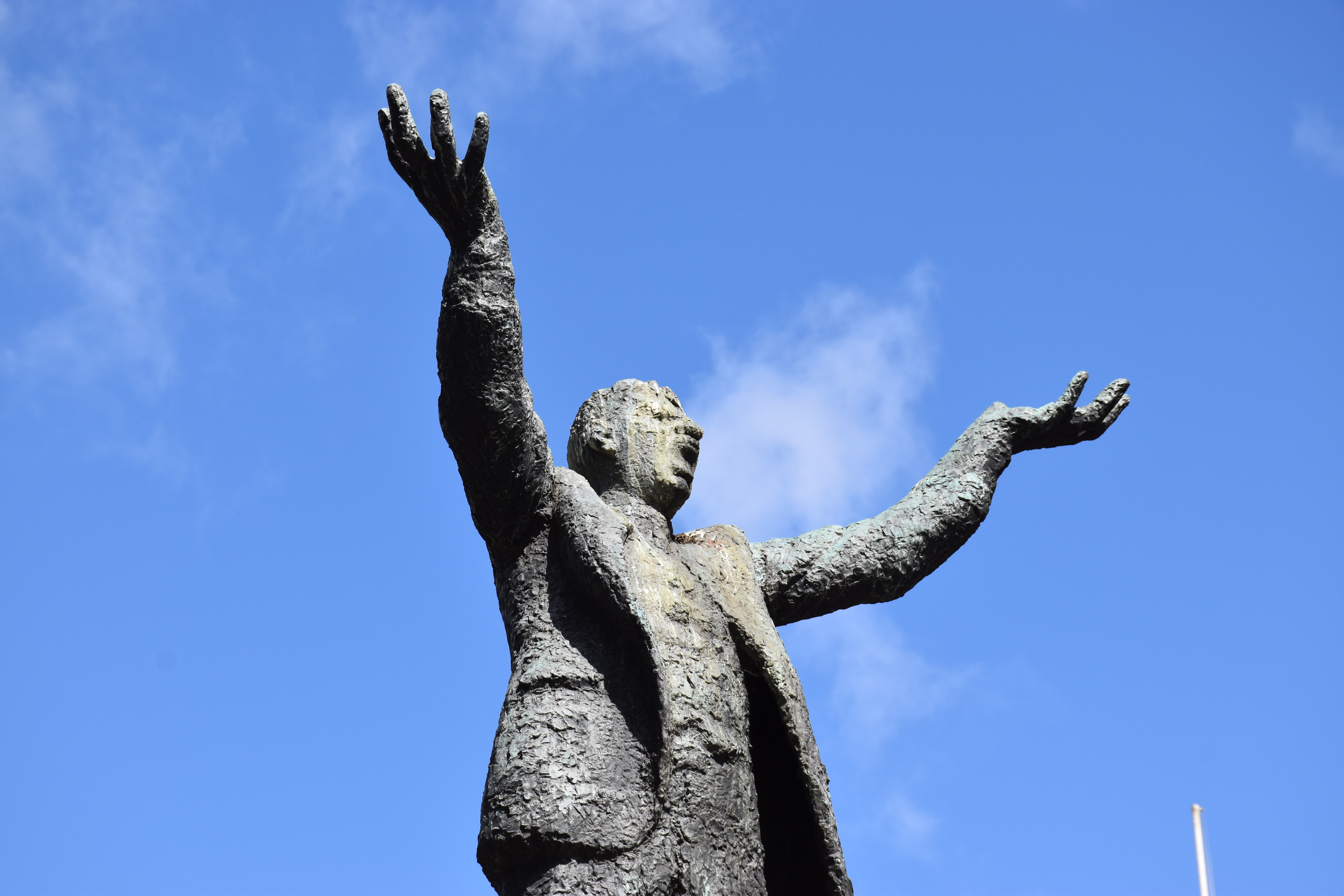James Larkin
1876 - 1947Audio
Video
Gallery
- Born in the slums of a great English city in.1876, like so many Irishmen of his generation, Larkin saw and suffered all that was the lot of his ghettoed class. He received hardly any education, watched his father die of tuberculosis, began to earn his living at the age of eleven, was duly exploited in a precarious labour market, struggled to keep his family from sinking into abject poverty, stowed away to escape unemployment and find adventure.
- larkin grew to become an influential labor leader in early twentieth-century Britain, Irish and the United States .
- A fiery speaker and charismatic leader, Larkin excelled at mobilizing and organizing workers, inspiring fervent loyalty in his followers and equally emotive hatred in his opponents .
- In beginning his Irish career at the age of thirty-one, Larkin In the next seven years, until the outbreak of the First World War in 1914, he laboured to build and perfect the most revolutionary labour union of its day—the Irish Transport and General Workers’ Union.
- The building of the Transport Union, and with it the foundations of the Irish Labour movement, was undoubtedly the most creative achievement of Larkin’s long life. These seven years, however, both in and out of Irish, were not only heroic and creative but tragic and violent as well. The terrible paradox was that there could not have been the one without the other.
- Even at the end of seven painstaking years, when his Union was wrecked by an overwhelming combination of Dublin employers, he could only be brought to grief, not to heel .
- The epic struggle of the Dublin workers against their employers in 1913 made Larkin an international figure in the world of labour. For nearly six months 20,000 men and women, on whom some 80,000 others depended for their support, were locked out because they refused to sign a pledge that they would never join Larkin’s Union or resign from it if they were already members.
- When he left Irish in late 1914 he planned to stay in the United States for only a short time, but he remained nearly eight and a half years.
- In the United States Larkin was by turns a lecturer, a union organizer, an Irish propagandist, a Socialist agitator, a founder of the American Communist Party, and a ‘martyred’ political prisoner .
- Larkin, needless to say, always took up his position on the extreme left, and was counted a ‘Red’ of the deepest hue. He was, indeed, a man who insisted on his version of the truth; and the price he paid was imprisonment, poverty, isolation, and loneliness, but he paid it with- out a whimper. When he was being deported at Ellis Island in New York in 1923, for example, and an attendant asked about his baggage, Larkin could still reply with a chuckle—‘Everything I own is on my back. I’m like the man in Whitman’s poem, “Free and light-hearted I take to the open road.”
- When he arrived in Irish, however, he soon discovered it was no longer a land for light-hearted men. A successful revolution against the British had degenerated into a tragic civil war among the Irish.
- When Larkin died nearly twenty years later in 1947 most people outside Irish were surprised, for they had assumed he had been dead for a long time. in Britain, Irish or America’‘Big Jim’ was always to be found in the front rank of the unpopular cause, and always on the extreme left politically speaking .
- Source ((James Larkin. Irish labour leader, 1876-1947 book by Larkin, Emmet)) .
Location
Contacts
1 O'Connell Street Lower, North City, Dublin 1
Phone: No Phone
















